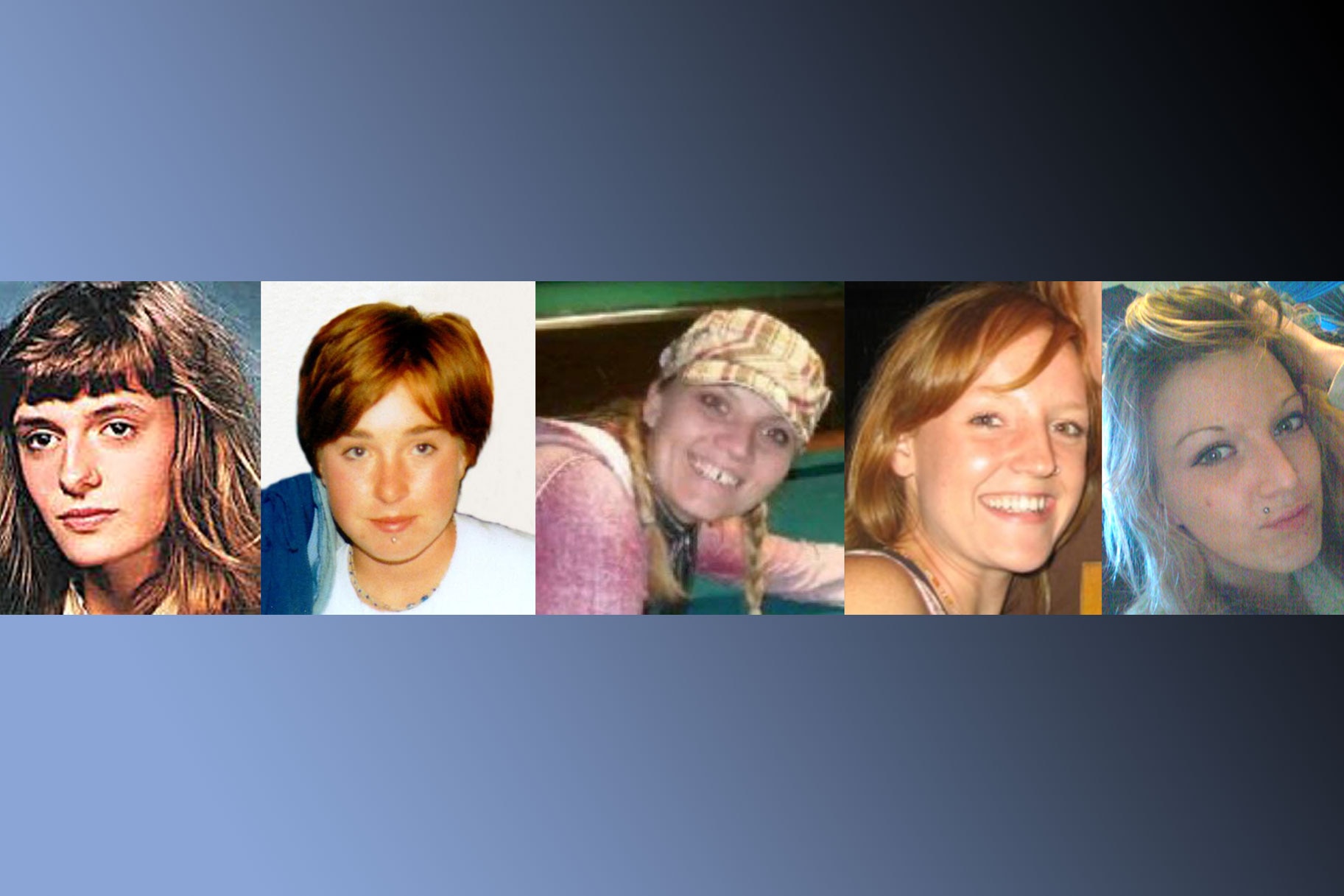Create a free profile to get unlimited access to exclusive videos, breaking news, sweepstakes, and more!
Who Are 'The Humboldt Five,' Women Who Vanished While In Northern California?
One podcaster wants to know what happened to her childhood friend Danielle Bertolini, one of the “The Humboldt Five,” whose cases remains unsolved.

Northern California's “Emerald Triangle” is considered to be one of America’s most beautiful areas. But it's also a a hotspot for missing persons reports, making it one of the most treacherous as well.
Last month, the host of the podcast “Murder, She Told” dived into the unsolved murder of Danielle Bertolini. She is one of five women who make up “The Humboldt Five"; Jennifer Wilmer, Karen Mitchell, Christine Walters and Sheila Franks are the other four.
“‘The Humboldt Five’ is a group of women that have kind of been clumped together as young women who all have similar looks, similarish backstories, that have gone missing or been found murdered in the same are,” Kristen Seavey, the host of “Murder, She Told,” told Oxygen.com via phone interview.
“A woman named them this to bring attention to how many missing people there are,” she explained. “Catchy names get people's attention.”
True crime investigator Billy Jensen, who wrote about the five missing women in his book “Chase Darkness with Me: How One True-Crime Writer Started Solving Murders.” credits missing persons activist Brenda Condon for coining the name.
Their cases span between the 1990s and 2014 and while some might be connected (namely Franks and Bertolini), Seavey doesn’t suspect they all are.
Seavey actually grew up with Bertolini in Maine and her two-part podcast episode on the case explores Bertolini’s love of the outdoors as well as personal trauma she suffered: her mother Billie Jo describes she lost her unborn son Xavier in 2010. As Jensen writes in his book, a doctor determined that the boy had severe developmental issues and would not survive. Bertolini underwent emergency surgery to terminate the pregnancy, an event that changed her. She then turned to heroin for self-medication and immediately fled to the refuge of Humboldt County for a change.
Bertolini vanished in 2014 at age 24 in the idyllic California region known for its picturesque redwood forests, but also illegal activity, violence, and hosts of missing people. Humboldt County is one of three counties that makes up the so-called "Emerald Triangle," an area famous for marijuana cultivation, both legal and black market. It's an area that has long attracted people looking to get closer to nature, or sometimes, to escape. Bertolini trimmed marijuana crops on a mountain for four years before she disappeared.
Jennifer Wilmer, 21, was the first of the five to vanish. She grew up in Long Island and moved to Humboldt in 1992. She had planned to enroll in College of the Redwoods but the classes were booked up so she began waitressing and looking for other work in the meantime. She was last spotted in Willow Creek in September 1993. Foul play is suspected.
Karen Mitchell, 16, disappeared four years later, in November 1997 in Eureka. The local teen attended school in the area and worked at Coastal Family Development Center. She was known for having liberal views and was passionate about politics and the environment. She was possibly last seen getting into a light blue four-door sedan, according to the Charley Project, an organization that compiles information about thousands of missing persons cases. Robert Durst, a suspected serial killer who has been linked to three deaths, was spotted in the area months later, and the Charley Project speculates that his likeness matches a sketch of the driver of that sedan. He has not been ruled out as a possible suspect, The Guardian reported in 2015.
In November 2008, Christine Walters, a 23-year-old Wisconsin native, vanished shortly after walking out of a copy store in Eureka. Just one week earlier, she was found bloodied and bruised on a doorstep, begging the residents to bring her to a hospital for help, according to her missing poster. She was a junior at the University of Wisconsin at Stevens Point, where she studied both botany and ethnobotany. She also taught Pilates and yoga, according to the Charley Project. She was visiting friends in the area and while and had become interested in spirituality and environmental causes.
Sheila Franks, 37, vanished in Eureka in 2014, just seven days before Bertolini did. The two are the only ones of the five who have been found, tragically in the form of partial remains. Bertolini’s skull was discovered in 2015 north of Rio Dell. Police have determined she died by homicide. A femur bone belonging to Franks was located near Loleta at the mouth of the Eel River, just 13 miles away from Bertolini's skull, in 2019. Her death is considered suspicious. Both women had blond hair and blue eyes, and were of similar appearance and build, Maine's Bangor Daily News pointed out in 2014.
The link between the two cases is a man named Jim Jones. Bertolini was last seen being given a ride by Jones, a person of interest in her case. Jones also lived with Franks, a divorced mom, when she vanished, NBC News reports. They were reportedly dating. No arrests have ever been made. Seavey has created an online petition which calls for more action on Franks and Bertolini's case. She wants investigators to re-interview Jones, to provide a public update on the case and speak to witnesses once again.
While the five cases have received some attention, it hasn’t been a lot compared to other missing persons cases. Seavey attributes that to the women’s profiles.
“The area attracts a lot of 'free spirits,' I think is a good word for it, and because of that it’s easy for the media to write them off as either somebody who was asking for it or somebody who got wrapped up into drugs or the wrong crowd,” she told Oxygen.com. “I think that's definitely the case for Danielle. [...] If you’re a sex worker, if you’re into drugs, you’re painted in a different light and people just don’t care as much.”
She also thinks that the general hesitancy among the region's residents to talk to law enforcement, due to the criminal element that's existed there for decades, is a contributing factor. That, and the fact that some people who move to the area are looking for an escape.
“A lot of people do go voluntarily missing too," Seavey said. "People who wanna go off the grid. This makes it harder when you have tons of people who go there to go off the grid and their family goes into a panic cause they can’t contact them and investigators spend time on those cases and it puts other cases on the back burner."
She said that local authorities have limited resources. She hopes to apply pressure to solve the cases by bringing some of them into the spotlight, like her childhood friend's death.
"My hope is that other people will hear her story through her mother’s words and that they will have more compassion or a different understanding for people who are in a similar situation or who fell into a downward spiral and can't get out instead of just reacting [by saying] ‘Don't do drugs,'” she said.
Seaver hopes that people see elements of themselves in these women.
"I want to feature stories of people who aren’t getting talked about," she said. "All victims should get justice."


























